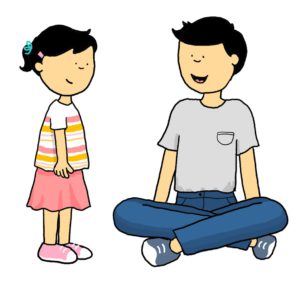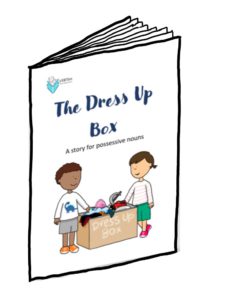Tips for teaching and consolidating syntax
-

Use correct syntax and grammar when talking with a child without correcting. For example, if a child says “I goed home”, respond with “Oh, you went home. What did you do afterwards?”
- Use the targeted syntactic form as part of your day-to-day interactions, as this will provide more repetitions and allow for extension to new situations e.g. ‘I have one teddy and you have two teddies’ or ‘Is that your sock or your sister’s sock?’
- Use the form in different contexts particularly for children who have reduced understanding, as some children will require a substantial number of models before they “get it”
- Use a slowed speaking rate
- Consider targeting the same syntactic form over a longer length of time if needed
- Play describing games where you and the child give each other clues in sentences e.g. ‘It is round. It’s on the wall. It tells time.’
- Retell a story you have read together or a show you have watched together
- Deliberately make a mistake and ask the child to help you “fix” it
Tips for printing and making syntax stories

It is best to print the stories double-sided and in colour as this will markedly increase a child’s interest. If you would like the book to be more durable, you may wish to print on thicker paper such as 110gsm. Ensure your printer option is set to “actual size” or “100%”.
Double sided printing
-
- Print all pages double sided (“flip on short side”).
- Keep the order of the printed pages as is.
- Fold the pages in the middle (along the blue line) with the title showing
- You may wish to bind the pages using a stapler, string, small bulldog clips or a hole puncher with book binding rings.
